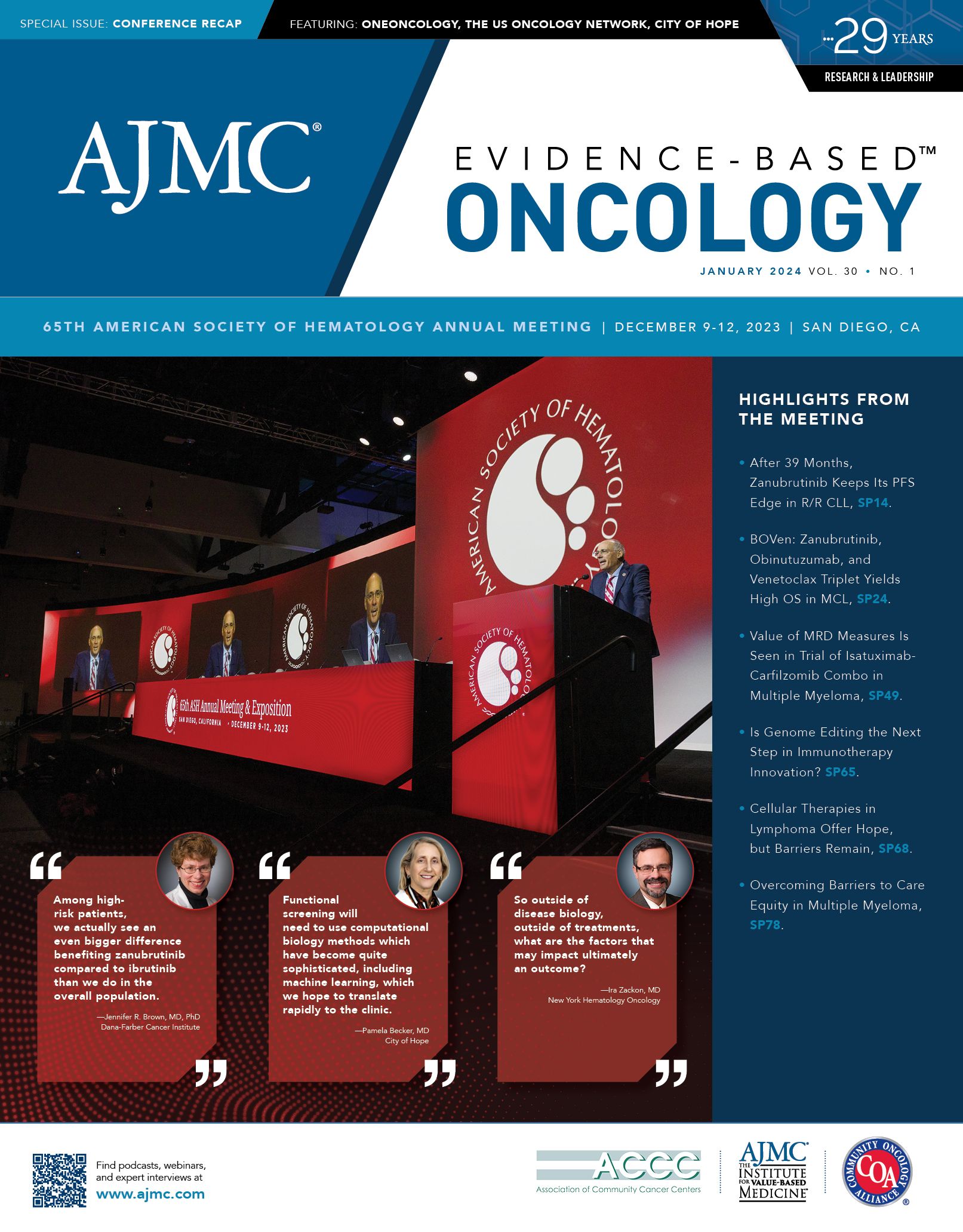- Center on Health Equity and Access
- Clinical
- Health Care Cost
- Health Care Delivery
- Insurance
- Policy
- Technology
- Value-Based Care
Understanding AGAVE-201 and Unmet Need in Chronic GVHD
Results for the phase 2 AGAVE-201 trial (NCT04710576), which studied different doses and schedules for axatilimab in pediatric and adult patients with refractory chronic graft-vs-host disease (GVHD), were presented December 10, 2023, at the plenary session of the 65th American Society of Hematology Annual Meeting and Exposition in San Diego, California.1 Results show the trial met the primary end point across all groups receiving axatilimab, an anti–colony-stimulating factor (CSF)-1R antibody that represents a new treatment approach.
Daniel Wolff, MD, PhD | Image credit: University Hospital Regensburg

Patients received doses of 0.3 mg/kg every 2 weeks, 1.0 mg/kg every 2 weeks, and 3.0 mg/kg every 4 weeks. Although the group receiving axatilimab at 0.3 mg/kg every 2 weeks achieved the highest overall response rate of 74% within the first 6 months of treatment (95% CI; 63-83), lead study author Daniel Wolff, MD, PhD, who is head, senior physician, and professor at University Hospital Regensburg, Germany, offered a more expansive view of these results in response to questions provided by Evidence-Based Oncology.™
In a statement, officials from axatilimab sponsors Incyte and Syndax official said patients in the 0.3-mg/kg cohort experienced a median time to response to axatilimab of 1.7 months (0.9-8.1), and 60% of patients maintained a response at 12 months (measured from first response to new systemic therapy or death, based on the Kaplan-Meier estimate). “The recommended dose of axatilimab for future trials in chronic GVHD is 0.3 mg/kg every 2 weeks,” the statement said.2
EBO: Can you discuss the unmet need for patients with recurrent or refractory chronic GVHD?
Wolff: Chronic [GVHD] affects 30% to 50% of patients surviving allogeneic stem cell transplantation, with 20% of all transplanted patients failing primary treatment, resulting in significant morbidity and symptom burden caused by the disease and its associated treatment. Patients with refractory chronic GVHD frequently require multiple lines of treatment with decreasing efficacy and are treated for years. Although in recent years, 3 agents (ruxolitinib, ibrutinib, and belumosudil) have been approved for the latter indication, a significant proportion of patients continues to fail in these treatments. Moreover, the number of individuals who have already failed multiple lines of treatment has accumulated over the [past] decades. In summary, there is a continuous need for new treatment options targeting effectively advanced chronic GVHD to improve the outcome of stem cell transplantation.
EBO: Are there treatments in the pipeline that could make chronic GVHD a more common problem?
Wolff: Over the [past] 2 decades, the frequency of chronic GVHD has increased. However, in recent years, the incidence has declined due to improved prophylaxis strategies (use of posttransplantation cyclophosphamide, anti-thymocyte globulin). Despite these achievements, a relevant proportion of patients [continues] to develop chronic GVHD that requires treatment.
EBO: In AGAVE-201, you studied different dosing levels and timing with axatilimab to treat chronic GVHD. What is the mechanism of axatilimab that makes it effective in GVHD?
Wolff: Axatilimab targets a new pathway [that] was not in focus yet. Prior strategies mainly targeted T and B cells—a strategy [that] fails, especially in patients with advanced chronic GVHD. The CSF-1 receptor pathway in monocytes and macrophages has been identified as being crucial in inflammation and fibrosis in the context of chronic GVHD. Axatilimab targets the CSF-1 receptor and blocks the pathway, which resulted in improvement of chronic GVHD in a significant proportion of patients, including those with fibrotic diseases, indicating the need for targeted treatment.
EBO: Results you presented at the plenary session showed that the lowest dose of axatilimab turned out to be the most effective. Do investigators have ideas on why this might be the case?
Wolff: While the lowest dose of axatilimab resulted in temporary decline of CSF-R stimulation and number of circulation CSF-1 receptor positive monocytes (but no elevation of the ligand CSF-1), higher doses led to a prolonged depletion of monocytes. This in turn resulted in high levels of accumulating CSF-1. The excess of CSF-1 overstimulated regeneration monocytes before the next dose, which partially abrogated the beneficial effect of CSF-1R blockade.
EBO: What are the next steps following presentation of these results?
Wolff: While in the AGAVE-201 trial, axatilimab was shown to be effective in treatment of advanced chronic GVHD—and results are currently submitted to FDA for review—future trials will focus on primary treatment of chronic GVHD to target early disease before it causes high symptom burden and prolonged treatment. This will hopefully significantly improve the long-term outcome of allogeneic stem cell transplantation.
References
- Wolff D, Cutler C, Lee SJ, et al. Safety and efficacy of axatilimab at 3 different doses in patients with chronic graft-versus-host disease (AGAVE-201). Blood. 2023;142(suppl 1):1. doi:10.1182/blood-2023-186963
- Incyte and Syndax present additional data from positive AGAVE-201 trial at ASH plenary session showing axatilimab efficacy including durable responses in chronic graft-vs-host disease. News release. Incyte. December 10, 2023. Accessed December 18, 2023. https://bit.ly/485Xpvs

Amid Search for Biomarkers in oGVHD, Research Focuses on Cytokine Profile of Tears
March 25th 2024A better understanding of biomarkers in ocular graft-vs-host disease (oGVHD) can help drive a more comprehensive understanding of the disease and improve patient outcomes, say researchers.
Read More
PROs May Successfully Risk Stratify Patients With Cutaneous Chronic GVHD
March 1st 2024Two existing, well-validated patient-reported outcome (PRO) measures may be useful as a prognostic marker for mortality and assist with treatment selection for patients with cutaneous chronic graft-vs-host disease (GVHD).
Read More
GVHD May Mimic Eosinophilic GI Disorders Following Bone Marrow Transplant
July 30th 2022After years of dependence on systemic corticosteroids, ruxolitinib treatment was effective for an adolescent patient with graft-versus-host disease (GVHD) who was initially thought to have eosinophilic gastroenteritis.
Read More
